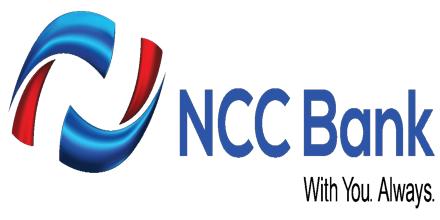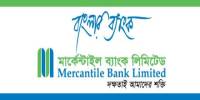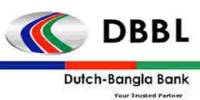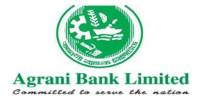The principle objective of this report is to analysis Foreign Exchange Business of NCC Bank Limited. General objectives of this reports are to gain practical exposures in different banking activities, this will be help for MBA Program, to familiar with the working environment in bank, to apply theoretical knowledge in the practical field, observe and analyze the performance of the specific branch. Finally acquainted with day to day functioning of service oriented banking business and to study existing bankers customers relationship.
Background of the Report
Economy of Bangladesh is in the group of world’s most underdeveloped economics. One of the reasons may be its underdeveloped banking system. Modern banking system plays a vital role for a nation’s economic development. Over the last few years the banking world has been undergoing a lot of changes due to deregulation, technological innovations, globalization etc. These changes also made revolutionary changes of a country’s economy. Present world is changing rapidly to face the challenge of competitive free market economy. It is well recognized that there is an urgent need for better-qualified management and better-trained staff in the dynamic global financial market. Bangladesh is no excepting of this trend. Banking sector in Bangladesh is facing challenges from different angles though its prospect is bright in the future. Money and banking is the center around which all-economic science clusters.
Objectives of the Report
The primary objective of the study is to meet the partial requirement for the fulfillment of MBA Program. The core objectives of the study are as follows:
- To gain practical exposures in different banking activities, this will be help for MBA Program.
- To familiar with the working environment in bank.
- To apply theoretical knowledge in the practical field.
- To observe and analyze the performance of the specific branch.
- To be acquainted with day to day functioning of service oriented banking business.
- To study existing bankers customers relationship.
- To learn about Foreign Exchange Business.
- To learn about loan and advance.
- To learn about general banking.
- To know about the function of administration.
Foreign Exchange Business of NCC Bank Ltd.
Definition of foreign exchange:
Foreign Exchange means foreign currency and includes all deposits, credits and Balance Payable in Foreign Currency as well as in foreign currency instruments such as drafts, T.C.S, Bills of Exchange, Promissory notes and Letter of Credit payable in any foreign currency.
Sources and uses of Foreign Exchange:
Foreign Exchange is mainly earned through export of goods and services by the residents of our country to the countries outside Bangladesh. Foreign exchange may also be acquired out of aids, grants and credits received by us from foreign countries. Remittances of the Bangladesh Nationals working abroad (wage earns) are also an important source of foreign exchange for Bangladesh.
Foreign exchange is acquired for settlement of international payments in connection with import of goods into the country as well as for meeting payments covering freight charges, insurance banking, debt servicing, travel and educational expenses etc.
Letter of Credit (L/C):
The letter of credit is an undertaking issued by a bank for the account of the buyer (the applicant) or for its own account to pay the beneficiary the value of the Draft and/ or documents provided that the terms and conditions of the Documentary credit are complied with.
Parties involved in a letter of credit:
- Importer/Buyer
- Opening Bank
- Exporter/Beneficiary
- Advising Bank
- Negotiating Bank
- Confirming/Reimbursing Bank.
Import procedure of NCCBL
As per import and Export Control Act 1950 no person can indent, import or export any goods in Bangladesh except incase of exemption issued by the government of the peoples republic of Bangladesh. So for doing import business at first every importer should obtain Import Registration Certificate (ICR).
Procedure for obtaining ICR
Through public notice or import policy the Chief Controller of Import and Export (CCI&E) invites application usually for registration of importers. The following paper and documents are required for submission to CCI and E for Import Registration Certificate:
- Application form
- Nationality Certificate
- Income tax registration certificate with GIR
- Trade License
- Membership Certificate
- Partnership Deed (For partnership firm)
- Certificate of Registration with the Register of joint Co. and Articles & Memorandum of Association in case of Limited Company.
- Bank Certificate
The nominated of the applicant will examine the paper/ document and verify the signature of the applicant and forward the same to the concerned office of the ICC and E with a forwarding schedule in duplicate through bank representative. The duplicate copy of the same bearing the acknowledgement of CCI and E office of the receipt of the document is received by the bank and is preserved.
Role of L/C in the Import procedure of NCCBL
A letter of credit is a letter that is issued by a bank (issuing bank) at the request of its clients addressed to a person (beneficiary) undertaking that the bills drawn by the beneficiary will be duly honored by the issuing bank providing certain condition mentioned in the letter.
The Clauses Contained In A L/C
A clause authorizes the beneficiary to drawn bill of exchange up to a certain on the opener.
- List of shipping documents, which are to accompany the bill.
- Description of the goods to be shipped.
- An undertaking by the issuing bank that bill drawn in accordance with the conditions will be duly honored.
- Instructions to the negotiating bank for obtaining reimbursement of payment under the credit.
Importer’s Application for L/C limit/ margin
To have an import L/C limit, an importer submits an application to NCCBL. In that application he/ she gives full detail of the following:
- Full particulars of bank accounts
- Nature of business.
- Required amount of limit
- Payments terms and condition.
- Goods to be imported.
- Offered security
- Repayments schedule.
A credit officer scrutinizes this application and accordingly prepares a proposal and forwards it to the Head Office Credit Committee. The committee, if satisfied, sanctions the limit and returns back to the branch. In this manner the importer is entitled for the limit.
The L/C Application
NCCBL provides a painted from for opening of L/C to the importer. A special stamp is attached on the form. While opening, the stamp is cancelled. The importer gives the following information is that form:
- Full name & address of importer.
- Date & place of expiry of the credit.
- The made of transmission of document (courier/mail/telex)
- Whether the confirmation of the credit is requested by the beneficiary or not.
- Whether the partial shipment is allowed or not.
- The type of loading (loading on boarding).
- Brief description of the goods to be imported.
- Availability of the credit by sight payment acceptance/deferred payment.
- The time bar within which the document should be presented.
- Sales terms (FOB/CIF/C&F)
- Account number.
- L/C account.
- Shipping mark.
- S. code number of the goods to be imported.
- IRC number.
- LCA number.
- Insurance number.
- Insurance cover note.
- Country of origin.
The above information are given along with the following documents
- Proforma Invoice, which give description of the goods including quantity, unit price etc.
- Four set of IMP form.
- The insurance cover note, issuing company & the insurance number.
Scrutinization of L/C application
The official of NCCBL scrutinize the application for the following reasons:
- The terms & conditions of the L/C must be complied with Exchange control & Import Trade Regulation.
- Officers examine whether the goods to be imported are legal.
- The L/C must not be opened in favor of the importer.
- Radioactivity report in case of food item.
- Survey report or certificate in case of old machinery.
- Good & carrying vessel from all the countries in the world except Israel.
- Certificate declaring that the item is in operation not more than five years in case of vehicles.
- To see whether the application is signed by the importer.
- Indenting registration
- Insurance cover note with date of shipment.
- Whether IRC updated or not.
- Whether IMP from dully signed or not.
Accounting Treatment is Case of L/C Opening
After sanctioning the L/C proposal by the branch incumbent/competent authority, the respective officer will pass the following vouchers:-
Party A/C—————————————————————– Dr.
Margin on L/C———————————————————– Cr.
Commission on L/C—————————————————- Cr.
VAT (15% of commission) on L/C———————————– Cr.
FCC (Foreign Correspondent Charge) A/C————————- Cr.
Telex/Postage Charges A/C——————————————- Cr.
A liability voucher is also passed. Such as-
Customer liability against L/C————————————— Dr.
Bankers Liability Against L/C————————————— Cr.
Transmission of L/C
The way of transmission of L/C are as follows:
- Through SWIFT
- Through Telex
- Through DHL or FEDEX
- Through Emergency Mail service (EMS)
Amendment of Letter of Credit:
Parties involved in a L/C, particularly the exporter & cannot always satisfy the terms & conditions in full as expected due to some unexpected reason. In such a situation, the credit should be amended. NCCBL transmits the amendment by tested telex to the advising bank. In case of revocable credit, it can be amended or cancelled by the issuing bank at any moment & without prior notice to the beneficiary. But in case of irrevocable L/C, it can neither be amended nor cancelled without the agreement of the issuing bank, the advising bank & the beneficiary. If the L/C is amended, service & telex charge is debited from the party account.
Presentation & Examination of Shipping Documents
The seller being satisfied with the terms and the conditions of the credit proceeds to dispatch the required goods to the buyer and after that, has to present the documents evidencing dispatching of goods to the Negotiating Bank on or before the stipulated expiry date of the credit. After receiving all the documents, the negotiating Bank then checks the documents against the credit. If the documents are found in order, the bank will pay, accept or negotiate the documents and will dispatch to this Branch. The branch checks the documents. The usual documents are:
- Invoice
- Bill of Lading
- Certificate of Origin
- Packing list
- Shipping Advice
- Non-negotiable Copy of Bill of Lading
- Bill Exchange
- Pre-shipment inspection report
- Shipment Certificate
Respective officials check whether these document have any discrepancy or not. Here “Discrepancy” means the dissimilarity of any of the documents with the terms and conditions of L/C. in case of discrepant documents; the branch advises the discrepancy/ discrepancies to the negotiating bank within seven (07) working days after receiving the documents.
Some of usual discrepancies are
- L/C expired
- Late shipment
- Amount drawn in excess of the letter of credit
- Bill of exchange not properly drawn
- Description of goods differ
- Interest clause is missing in Bill of Exchange, where stipulated
- Bill of Exchange is not drawn/signed by the beneficiary of the credit
- Bill of lading or Airway Bill of lading is issued under a charter party
- Insurance cover not as per terms of L/C and insurance does not cover the entire voyage and insurance policy is not properly stamped
Lodgment & Retirement of Shipping Documents
It is found that the documents have consistency with the terms written in L/C, then the documents are lodged in PAD & the following vouchers are prepared:
Sundry deposit L/C margin A/C———————————————– Dr.
PAD A/C————————————————————————– Cr.
(margin amount transferred to PAD A/C)
Customer A/C——————————————————————- Dr.
PAD A/C————————————————————————- Cr.
(Customer accounts debited for the remaining amount)
PAD A/C———————————————————————- Dr.
H.O general A/C————————————————————- Cr.
Interest A/C—————————————————————— Cr.
(Amount given to Head office ID & Interest credited)
Reverse Entry:
Banker’s Liability A/C—————————————————– Dr.
Customer’s Liability A/C————————————————- Cr.
(After the lodgment is given)
After realizing the telex charge, service, interest (if any), the shipping document is then stamped with PAD no. & entered in the PAD register. After repairing the necessary vouchers, endorsement is made on the bank of the B/E as Received Payment & the B/L is endorsed as please delivery to the order of M/S——— under two authorized signatures of NCCBL’s officers (P.A. holders). Then the documents are given to the Importer.
Payment procedure of Import Documents
Date of Payment
Usually payment is made within seven days after the documents have been received. If the payment is deferred, the negotiating bank may claim interest for making delay.
Preparing Sale Memo
As sale memo is made at B.C rate to the customer. As the T.T. & O.D. rate is paid to the ID, the difference between these two rates is known as Exchange Trading. Then an Inter Branch Exchange Trading Credit advice is sent to Inter ID.
Requisition for the foreign currency
For arranging necessary fund for payment, a requisition is sent to the ID.
Transmission of Telex
A telex transmitted to the correspondent bank ensuring that payment is being made.
Back to Back letter of Credit
A back to back letter of credit is a new credit. Is is different from the original credit based on which the bank undertakes the risk under the back to back credit. In this case, the bank’s main security is the original credit (selling credit) and the back to back credit (buying credit) are separate instruments independent of each other and no way legally connected, although both are part of the same business operation. The supplier ( beneficiary of the the back to back credit) ships goods to the importer or supplies goods to the exporter and presents documents to the bank as is the credit. It is intended that the exporter would substitute his own documents and ships the goods to the importer, if necessary, and present documents for negotiation under the original credit, his liability under the back to back credit would be adjusted out of these proceeds. The export L/C is marked lien and no margin is taken.
Documents that required to submit at NCCBL for the opening of a back to back L/C are given below:
- Mastered L/C
- Valid Import Registration Certificate (IRC) & Export registration Certificate (ERC).
- L/C application & LCA from dully filled up & signed.
- Proforma Invoice or Indent.
- Insurance cover note with money receipt.
- Duly signed IMP form.
Processing of L/C Proposal
- Name & address of the party,
- Name & address of the government,
- TIN & IRC Number,
- Date of opening of Account,
- Turnover id CD Account (last 6 month)
- Amount of L/C Applied,
- Commodity to be imported,
- Branch’s total exposure on the proposal item,
- branch’s total exposure ( Total outstanding on account of the party)
- name & Address of the beneficiary,
- Status report on the beneficiary,
- Country of origin,
- Mode of Shipment,
- Shipment validity,
- Margin proposed by the party,
- Margin recommended by the branch manager,
- Past performance of the party,
Present liabilities position of the party in its own name and on account os sister concerns:
- L/C liabilities,
- PAD Liabilities,
- LIM Liabilities.
landed Cost (of the item to be imported)
a) landed cost per unit,
b) Market price per unit.
- Retirement of documents.
- Business worth / ability of the applicant.
- Branch Manager Recommendation.
Approval / Sanction of L/C proposal
- name of importer & Address
- Name of Guarantor & Address (if any)
- Amount of L/C Approved,
- Margin to be retained in cash,
- Import Finance (Amount)
- item (Goods to be imported)
- Commission,
- Other terms & condition:
- Approval valid for 1 months,
- Security i.e B/L & charge documents to be obtained .
- Interest on PAD/LTR/LIM @ 15% per annum.
- 15% Vat to be realized on L/C commission,
- Fluctuation in exchange rate will be borne by importer.
Various steps involve in the operation of letter of credit
- The importer and exporter have made a contract before a L/C is issued.
- Importer applies for a letter of credit from his banker known as the issuing bank. he may have to use his credit lines. If he is a new customer, margin deposit may be required : e.g. 20% deposit on credit amount.
- Issuing bank opens the L/C which is channeled through its overseas corresponding bank, known as advising bank.
- Advising bank informs the exporter (the beneficiary) of the arrival of the L/C.
- Exporter ships the goods to the importer or other designated place as stipulated in the L/C.
- Meanwhile, he prepares his own documents and collect transport documents or other documents (e.g. insurance policy) from relevant parties. All these documents will be sent to his banker which is acting as the negotiating bank.
- Negotiation of export bills happens when the banker agrees to provide him with finance. In such case, he obtains payment immediately upon presentation of documents. If not, the documents will be sent to the issuing bank for payment or on an approval basis as in the next step.
- Documents are sent to issuing bank (or reimbursement bank which is a bank nominated by the issuing bank to honour reimbursement from negotiation bank) for reimbursement or payment.
- Issuing bank honour it’s undertaking to pay the negotiating bank on condition comply with L/C terms and conditions.
- Issuing bank releases documents to importer when the letter makes payment to the former or against the letter’s trust receipt facility.
- The importer takes delivery of goods upon presentation of the transport documents.
Export Procedure of NCCBL
Export is one of the most important activities that can increase economic and social well being through transaction of goods and services from domestic economic agent to foreign economic agent for which domestic economic agents receives payments, preferably in valuable foreign currency. The import and export trade in our country is regulated by the Import & Export Control Act, 1950. There are some formalities, which an exporter has to fulfill before & after shipment of goods. There procedures are described in the following lines.
Registration from Chief Controller of Import & Export (CCI & E)
No persons without registration granted by the chief controller of importers and exports shall anything into or out of Bangladesh except in case of exemption issued by the government. Under the export policy of Bangladesh the exporter has to get the valid Export Registration Certificate (ERC) from Chief Controller of Import and Export (CC&E). The ERC is required to renew every year. The ERC number is to be incorporated on EXP forms and other papers connected with exports.
Registration of Exporters
For obtaining Export Registration Certificate Bangladesh exporters are required to apply to the controller of import & export in the prescribe from along with the following documents:
- Nationality & Assets certificates;
- Memorandum and Articles of Associates and certificate of incorporation in case of Limited Company;
- Bank Certificates;
- Income Tax Certificate;
- Trade License etc;
Obtaining EXP
After getting ERC the export applies to NCCBL (or any other commercial bank) with trade license & if the bank is satisfied, an EXP issued to the exporter.
Securing of Order
After getting the ERC the exporter may proceed the secure the export order. He can do this by contacting the buyers directly through correspondence. I this purpose exporter can get help from:
- Liaison Offices;
- Buyer’s Local Agent;
- Export Promoting Organization;
- Bangladesh Mission Abroad;
- Chamber of Commerce (Local & Foreign);
- Trade Fair etc.
Signing the Contract
While making a contract, the points are to be motioned:
- Price of the goods
- Describe of the goods
- Quantity of the goods
Receiving the Letter of Credit
After going contract for sale, exporter should ask the buyer for letter of credit (L/C) clearly stating terms and conditions of export and payment. The following are the main points to be looked into for receiving / collecting export proceeds by means Documentary Credit:
- The terms of the L/C are in conformity with those of the contract
- The L/C is an irrevocable one, preferably confirmed by the bank,
- The L/C allows sufficient time for shipment and negotiation.
Procuring the Materials
After making the deal and on having the L/C opened in his favor, the next step for the exporters is to set about the task of procuring or manufacturing the contracted merchandise.
Shipment of Goods
The following are the documents normally involved at the stage of shipment:
- EXP form
- ERC (valid)
- L/C Copy
- Customs duty certificate
- Shipping Instruction
- Transport Documents
- Insurance Document
- Invoice
- Bill of Exchange (if required)
- Certificate of Origin
- Inspection Certificate
Quality Control certificate
Now export submits all these documents along with a letter of Indemnity to NCCBL for negotiation. An officer scrutinize all these documents. If the documents are clean, NCCBL purchase the documents on the basis of banker customer relationship. This is known as Foreign Documentary Bill Purchase (FDBP).
Forwarding Foreign Bill for Collection
- If the documents have discrepancies.
- If the banker is in doubt.
- If the exporter is a new customer.
- Foreign Documentary Bills of collection signifies that the exporter will receive payment only when the issuing bank gives payment.
Important Documents Associates with Export.
(1) Letter of Credit.
(2) Bill of Exchange.
(3) Invoice.
(4) Bill of Lading.
(5) Certificate of Origin.
Common Discrepancies
NCCBL official usually find the following discrepancies while checking the above-mentioned documents:
- On board nation of in Bill of lading undated/unauthenticated.
- Shipment effected from port other than that stipulated in the credit.
- Full set of Bill of lading not presented.
- Certificate of country of origin not provided.
- Weighment certificate not presented.
- Cuttings/alternations in documents no authenticated.
- Documents inconsistent with each other.
- Description of goods on invoice differs from that in the credit.
- Credit (L/C) amount exceeded.
- Credit (L/C) expired.
- Documents not presented in timed/ state bill of lading.
- Late shipment.
- Absence of signature, where required, on documents presented.
- bill of lading does not evidence whether freight is paid of not.
- Packing list not submitted.
SWOT ANALYSIS
Internal Factors:
Internal factors that are prevailing inside the concern, which include strength and weakness.
Strength
- The NCCBL has well reputation in the market
- Not engaged in unfair business practices
- Concentrated market
- Executives are experienced in banking business
- Well – furnished & air – conditioned banks
- Efficient management practices in the bank
- Cooperation among the officers & executives
- Lack of classified loan
- Good Banker – Customer relationship
Weakness
- Short period of experience of the bank
- Officers have limited experience and not enough trained
- Reluctant to AD Campaign
- Most of the officers are not business gradguate and not highly qualified.
- Selection and recruiting process of wore force is not scientific
- Lack of energetic, dynamic, talent and smart work force.
- Small market share.
- High interest rate of loan.
- The bank has no ATM service.
- The bank is not conscious about its social responsibilities.
- Insufficient number of deposit Scheme and loan
- Information gap between Head Office and Branch
- Long – term credit is not sufficient
External Factors
External factors are factors, which act as opportunities and threats.
Opportunities
- Can increase the deposit and credit scheme
- Private commercial banks are becoming more reliable to the local public
- has banned some “Jatiya Sanchaya Patra”
- has taken step against illegal remittance
Threats
- Intense competition in the market
- Competitors have more deposits
- Different sors of services are offerde by foreign banks
- Existing Card services of standard Charterde Grindlays Bank, Dhaka Bank, National bank, Bank Asia etc.
- Daily Basis interest on deposit offerde by more banks
- Entrance of new private commercial banks
- Young, energetic, dynamic, talent and smart work force of competiors
- Competitors have more attractive deposit schemes
- Tomorrow’s business world is for knowledge organization
- imposes high rate of taxes and VAT
- pressures to reduce interest rate
Recommendations and conclusion
Recommendations
In order to get competitive advantage & to deliver quality service top management always try to modify the services. For the better condition of the service the following measures may be taken:
- Customer’s Convenience : For customer’s convenience, NCCB should provide more personnel to deliver faster to their honorable customer.
- Human Development: Development of human resources should be ensured to increase efficiency in work.
- Interest: More interest should be paid on deposit account so that customers are convinced to deposit their money in bank.
- Computerization: To ensure error free fast task bank should be fully computerized.
- R & D : Research & Development wing must be more extensive & rich.
- Strategy : Effective strategies must be undertaken against defaulter.
- Project management : ‘Project Management’ must be practiced in case of investing in the project. Feasibility study of the project, project planning, Monitoring & evaluation should be undertaken.
- Financial Analysis : Branch should have a separate section to analyze the financial statement for fining its liquidity. Profitability & ownership ratios.
- Image: They should try to attract people for bank development.
Some other important factors that should be focused on the development process
- Evaluate customer’s needs from their perspective and explain logically the shortcomings.
- Improve ATM facility to every branch.
- To deliver quality service top management should try to mitigate the gap between customer’s expectation & employee’s perception.
- Use of effective AIS.
Conclusion
There are a number of nationalized and foreign banks operating their activities in Bangladesh. The NCCB is one of them. For the future planning and the successful operation for achieving its prime goal in this current competitive environment this report can be a guideline.
Form the practical point of view I can declare boldly that I really have enjoyed my internship at NCCB from the first day. Moreover, internship program that is mandatory for my MBA program. Although short – dated obviously has helped my further thinking about my career.
Banks always contribute towards the economic development of a country. NCCB compared with other banks are contributing more by investing most of their funds in fruitful projects leading to increase in production. It is obvious that right thinking of this bank including establishing a successful network over the country and increasing resources, Will be able to play a considerable role in the portfolio of development financing in the developing country like ours.
NCCB continues to play its’ leading role in socio – economic development of the country. Since inception NCCB has been rendering its’ banking services with the necks of the nation to cope with the demands of people in the country. By doing many other works of state & society, NCCB has emerged as the pioneer of playing key role in the country.
















